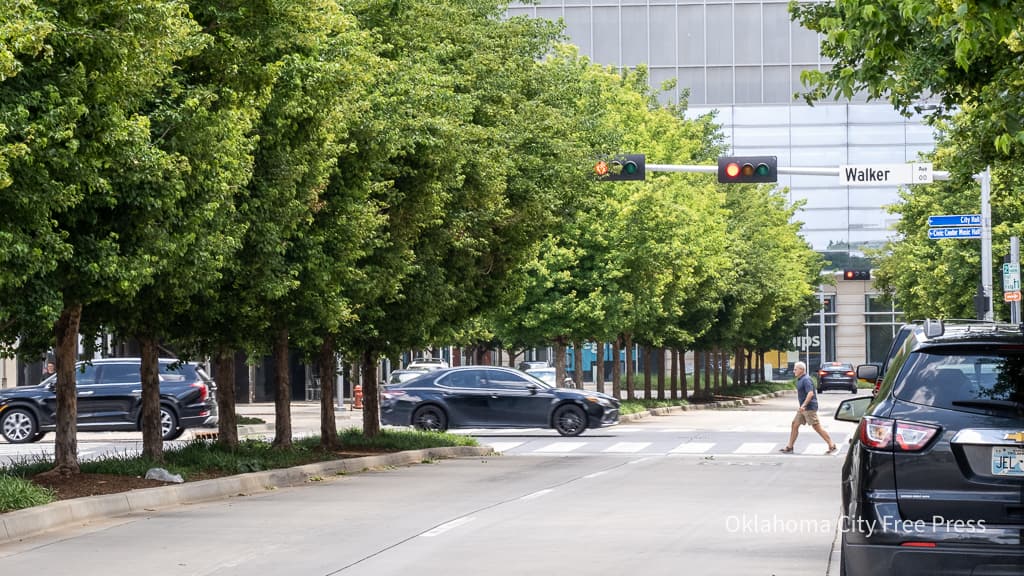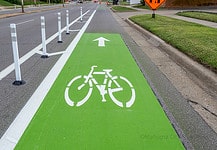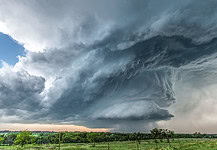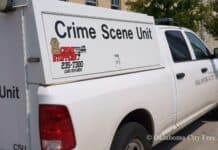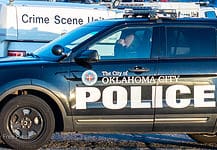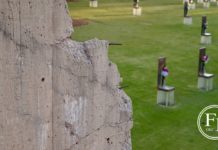Last Updated on August 6, 2023, 2:46 AM | Published: June 3, 2023
OKLAHOMA CITY — If you’ve had a stroll or a drive through Downtown OKC recently, you’ve surely noticed the full, healthy, vibrantly green trees lining the sidewalks and shading the streets.
But far from being a simple aesthetic addition to city streets, one of Oklahoma’s leading urban foresters, Mark Bays, made it clear just how integral our urban trees really are for the health and happiness of city residents.
“They’re not amenities. They’re not niceties,” Bays said. “They’re necessities.”
Yet, getting the trees to a point where they can thrive – and getting them into the ground in those locations in the first place – is a daunting task.

“Having a real infrastructure and a plan for future maintenance is critical to the success of these trees,” said Phi Nguyen, Chief Operating Officer of Downtown OKC Partnership, a non-profit focused on managing the Business Improvement District of Downtown OKC. “It’s not as simple as just finding a location, purchasing the tree, and dropping it in the ground.”
Urban Landscape
Much of the impressive treescape of Downtown OKC is thanks primarily to the successful Project 180 initiative.
Launched in 2009 and completed officially in 2019, Project 180 was a massive, $180 million undertaking focused on redesigning and rejuvenating Downtown, with greenery and the city canopy near the top of its priorities.

“We got really lucky with Project 180,” Nguyen said. “It was able to put all of that infrastructure in place, including all the tree wells, what types of trees would go in, and all of the irrigation, which is the most expensive part.”
As part of the Project 180 terms, maintenance and upkeep for the new trees fell under the city government’s purview for the first three years before then transferring over to Downtown OKC Partnership, just before another major opportunity came their way.
“We had forty-four trees that we just replaced this March in City Center alone,” said Danielle Dodson, Downtown OKC Partnership’s Director of Communications. “They were mostly trees that were damaged in the 2020 ice storm. That’s how long it took to find funding. But then suddenly [environmental beautification non-profit] OKC Beautiful reached out and said ‘hey, we have all these trees that we’re trying to find homes for.'”
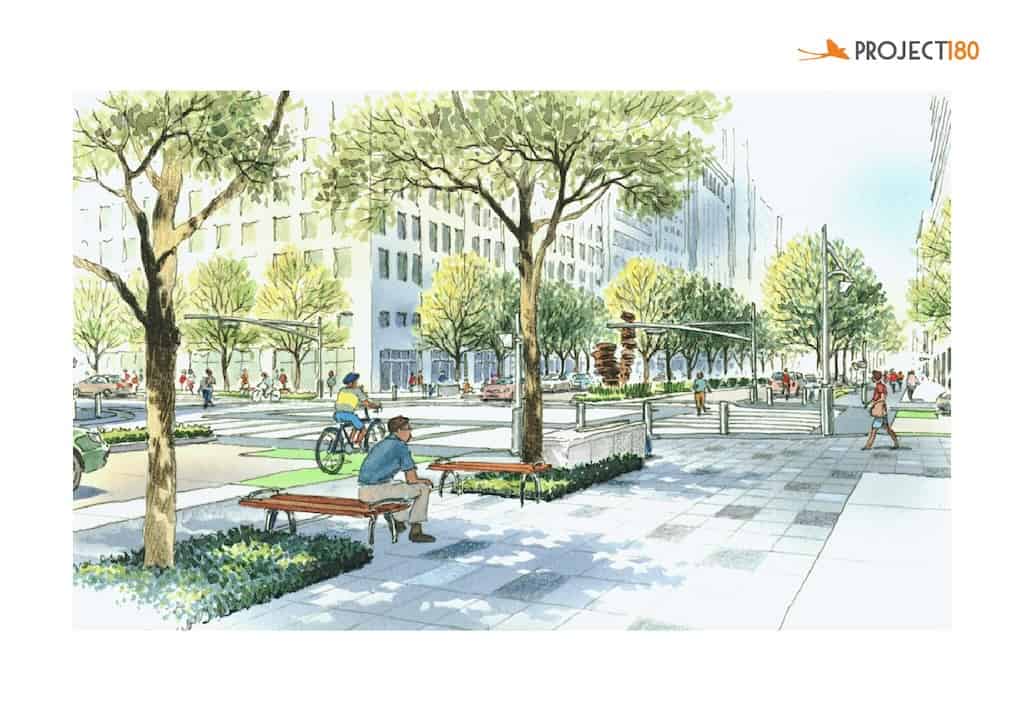
The more than forty damaged trees replaced in City Center were part of a deal with OKC Beautiful for roughly 200 trees to be planted and maintained throughout Downtown and Midtown.
The deal cost more than $70,000, but was paid for by grants, redirection of existing funding, and most importantly, some major financial input from private property owners in the area.

“We were thrilled about how excited private property owners were to take advantage of the opportunity and to invest in the infrastructure,” said Nguyen “All of Downtown was just really lucky to have that opportunity.”
Even with that kind of monetary help and community backing, however, the complicated, interconnected irrigation system required for maintaining healthy trees in an urban environment remains one of the most costly elements of Downtown operations.
“The top three most expensive things,” Nguyen told me,” are holiday lights, fireworks, and irrigation.”
Root Causes
The street-lining trees throughout Downtown comprise a number of species, mostly types of oaks and elms, with some Bald Cypress, Black Gum, and the beautiful, seasonally red-orange Chinese Pistache mixed in.
“You have to plant a lot of different species all over,” said Dodson, “because if one species gets a disease, it takes out the whole block.”
That unfortunate scenario actually happened in Downtown recently.
“Just a few years ago, around City Hall,” said Dodson. “We had a soil test and everything, but a disease came in and wiped out most of the trees all around City Hall. It was devastating. If it’s just one small section, that’s recoverable, but it took out everything. And that can be hundreds of thousands of dollars worth of investment.”

When dealing with living environmental factors like trees, the most trying challenges are those unforeseen issues such as root diseases or natural disasters.
“Just like the ice storm in 2020,” Nguyen said. “We’re actually still dealing with the aftermath of that.”
After experiencing these kinds of difficulties firsthand, they’ve learned how to better prepare and safeguard city trees for similar circumstances in the future.
“We actually now have a five-year structural pruning plan,” said Dodson. “And that’s not only because they have to grow correctly around city buildings, but it also makes them much stronger. So if something like that happens again, we’re going to have far fewer trees taken out.”
Canopy Comforts
With the markedly high costs and potentially disastrous concerns, you might think that putting so much into planting and maintaining city trees is a trivial expense.
But experts say you’d be wrong.
“The value of trees is about air quality, and about cooling the sidewalk, and about a direct impact on productivity and human health and all of those things,” said Mark Bays, Oklahoma Forestry Services Urban Forestry Coordinator.
Possessing seemingly infinite knowledge, respected urban arborist Bays knows that well-kept city trees are much more than an aesthetic luxury.
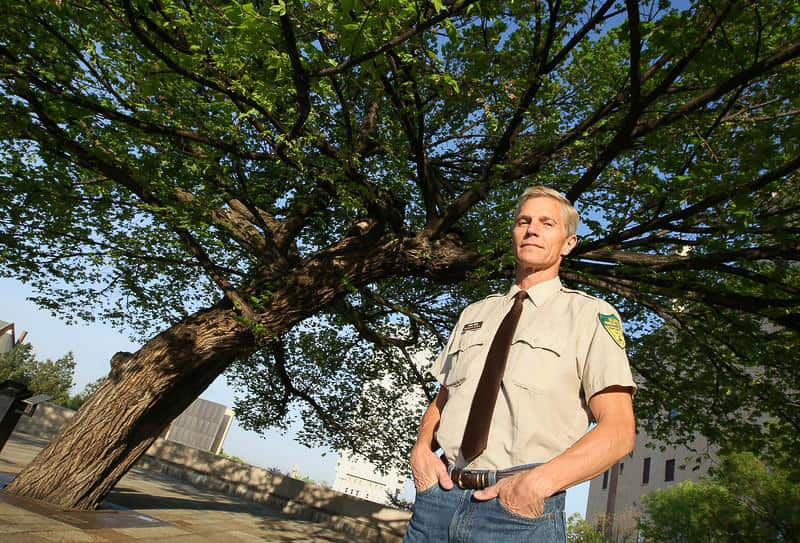
“There’s research that’s been going on forever that shows just how valuable having green spaces in downtown areas can be, reasons that go way beyond just beautification,” he said. “I always jokingly say ‘beautification be damned,’ because that’s all just an added benefit.”
As perhaps the leading mind behind saving and preserving the Survivor Tree at the Oklahoma City Memorial, Bays may know more than anyone about how to protect and care for trees in the most hostile of urban environments. And, he also knows how important they can be to a community.
“They are needed in our urban environments,” he said. “We might think that we can’t afford trees because of fixing potholes and roads or funding the police, but research and real-world studies show that trees actually prolong the life of roadways and can even lead to less violence.”
‘Part of the Solution‘
To illustrate this, he pointed to a recent assessment project from the Oklahoma City Community Foundation, Oklahoma Forestry Service, and Association of Central Oklahoma Governments.
“They did a tree canopy assessment starting at north Norman and going all the way to south Edmond, looking at things like canopy coverage, parkland, and tree condition and health,” he explained. “In that whole area, believe it or not, there was 23% tree canopy. And when you put a benefit calculator to that for things like air quality, stormwater runoff, and energy savings, we’re getting about $150 million annually from those trees.”
That kind of clear financial benefit combined with the immeasurable quality-of-life improvements that trees and greenery bring to a community can surely make them worth the costs and efforts.
“If we think about all the human elements that our cities have,” Bays said, “trees really are part of the solution.”
Brett Fieldcamp has been covering arts, entertainment, news, housing, and culture in Oklahoma for nearly 15 years, writing for several local and state publications. He’s also a musician and songwriter and holds a certification as Specialist of Spirits from The Society of Wine Educators.
